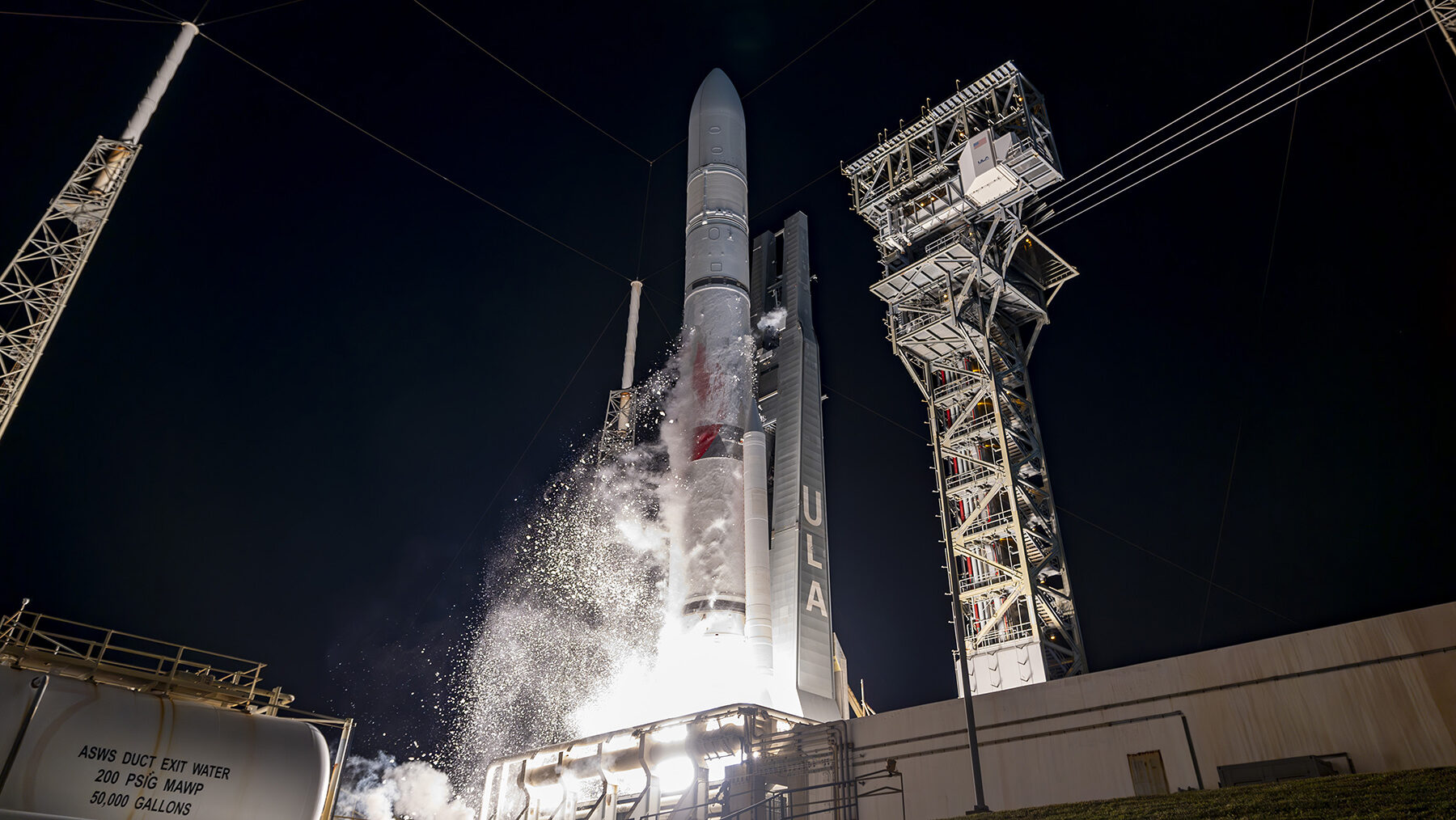
ULA’s first Vulcan rocket lifts off from Space Launch Complex-41 at 2:18 a.m. EST on January 8, 2024. (Photo: United Launch Alliance)
WASHINGTON — United Launch Alliance’s Vulcan Centaur heavy lift rocket successfully took to the heavens early this morning for the first time — marking its long-delayed first step towards certification by the Space Force as capable of carrying critical national security payloads.
Vulcan is designed to replace the Lockheed Martin-Boeing joint venture’s Atlas V and Delta IV rockets, both of which ULA has phased out. Thus, it is critical to the firm’s ability to both stay in business and continue to participate in the Space Force’s National Security Space Launch (NSSL) program.
ULA and SpaceX won the ongoing NSSL Phase 2 awards in 2020, under an indefinite delivery/indefinite quantity award worth billions, covering all Space Force and National Reconnaissance Office launches between 2022 and 2027. ULA was awarded a 60 percent share of all the launches, and SpaceX 40 percent. Both companies also are expected to vie for the next round of NSSL contracts, Phase 3, that covers launch orders made from fiscal year 2025 through 2029 to lift payloads to all orbits (from low Earth orbit up to deep space) between FY27 to FY32.
Vulcan Centaur already has four national security launch missions (under Phase 2) on its manifest for this year, Mark Peller, ULA’s vice president of Vulcan development, told reporters Jan. 5.
But those missions are predicated on ULA’s obtaining final Space Force certification for Vulcan with a second flight now planned for this spring.
“We need to get through two flights. And we will evaluate the data and we expect that will put us on a path to complete our National Security Space Launch certification,” Peller said.
Vulcan’s first stage is powered by Blue Origin’s BE-4 engines, which were designed to replace the Russian RD-180 engine that Congress barred for US use as of the end of 2022. Delays in the development of the those engines were a major cause in the nearly four-year schedule slip in Vulcan’s debut.
“This is a groundbreaking day, culminating years of technical collaboration and partnership to field a new launch system for the United States,” said Brig. Gen. Kristin L. Panzenhagen, Space Force Space Systems Command program executive officer for assured access to space, and commander of the 45th Space Launch Delta, in a Jan. 8 statement provided to reporters. “Today’s launch marks a new space launch capability that will complete the Department of Defense’s transition from foreign engines and ensure the Joint Force’s ability to achieve space superiority when necessary while also maintaining the safety, security, stability, and long-term sustainability of the space domain.”
Vulcan also is using Northrop Grumman’s new GEM 63XL strap-on solid rocket boosters to help get it off the ground. ULA in June 2022 awarded Northrop Grumman “a multi-year contract worth more than $2 billon for increased production of the boosters, which will support Amazon’s Project Kuiper and additional ULA customers,” Northrop Grumman said in a statement.
While no national security payloads were on board Vulcan’s maiden flight, today’s launch carried five NASA payloads related to its Artemis program for returning US astronauts to the Moon and eventually Mars on the first-ever commercially developed lunar lander. Built by start-up Astrobotic, the Peregrine lander’s development and flight was partially paid for through NASA’s Commercial Lunar Payload Services (CLPS) initiative, in which NASA contracts with commercial partners as part of the Artemis program. However, the mission — which has embroiled NASA in a controversy because of payloads carrying the cremated remains of humans and one dog — has experienced technical problems that Astrobotic today announced may prevent it from actually landing.
L3Harris selloffs hampered by low bids, CEO says
“To the extent we can get a good price for what we’ve identified as non-core [businesses], we’ll do it. But too many of the offers are coming in low and people think we’re desperate to sell, and I can assure you we’re not,” said L3Harris CEO Chris Kubasik.



























